Philipp Goldbach
Philipp Goldbach (*1978) studied Media Arts with a focus on Photography at the Academy of Media Arts Cologne.Concurrently he studied Art History, Philosophy und Sociology at the University of Cologne, where he received his doctorate in 2016. Goldbach has taught as Assistant Professor for Photography at the Academy of Media Arts Cologne (2008-2009) and as Docent for Film and Photographic Studies at the Leiden University Centre for the Arts in Society (LUCAS) of Leiden University (2017-2019). He was a member of the curatorial team at Simultanhalle Cologne and is part of the artist group darktaxa-project. Amongst others Goldbach was awarded the Vordemberge Gildewart scholarship (2009) and the Ars Viva Prize for Fine Arts (2011/12). He has exhibited internationally at numerous institutions including the: CCCB Barcelona, EPFL ArtLab Lausanne, FOTO|RAUM Vienna, Riga Art Space, ZKM | Zentrum für Kunst und Medien Karlsruhe, Museum Wiesbaden, Museum Folkwang Essen, Wilhelm-Hack-Museum Ludwigshafen, Kunsthalle Düsseldorf, Museum Weserburg Bremen, Kunsthalle Bremerhaven, Haus der Photographie-Deichtorhallen Hamburg. Works are held in the collections of Museum Wiesbaden, Mudam Luxembourg, Centre Pompidou, DZ BANK Kunststiftung, Museum Folkwang. Philipp Goldbach lives and works in Cologne, Germany.
Link: pgoldbach.de
The work “Read Only Memory (ROM)” is a digital memory constructed and handcrafted by Philipp Goldbach; in the form of an approx. 1 square metre memory board. Goldbach etched a conductor grid out of the copper-coated base plate, drilled through it and fitted it with 8.000 to 9.000 diodes soldered on both sides. Goldbach then coded canonical texts of the 17th century, which thematize ideas for a universal language, and transmitted them bit by bit in 0 and 1 switching states. The content written to the memory board by this process is permanently fixed and cannot be deleted or overwritten. Goldbach sees his work ROM as a "retrospective prototype", a fictitious precursor of today's computer technology. He says: "On the one hand, the work ROM thematizes the basis of what a digital image is. The digital code in its most elementary form is physically realized in the material and implemented as a circuit of positive and negative voltage states in a diode matrix. In other words, something that is embedded in every camera, in every memory chip in a far more complex, miniaturized form." In addition, he establishes an indirect reference of the "lingua universalis" texts of the 17th century to the medium of photography, which "since its 'invention' has repeatedly been placed in the context of such a universal language, i.e. a language of global reach and universal comprehensibility, which continues into the discourse of digitalization".
Text: Michael Reisch
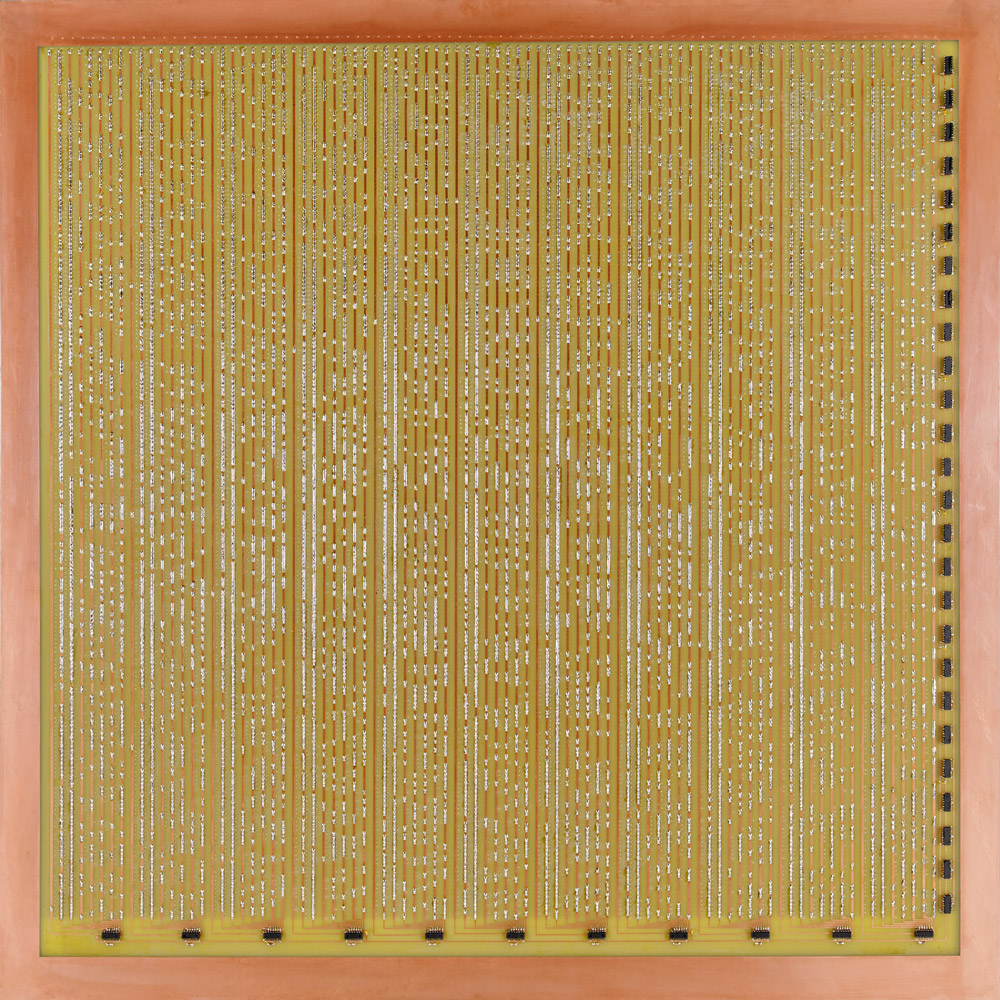 Philipp Goldbach: Read Only Memory, A Philosophical Language (J. Wilkins), doppelseitig kupferkaschiertes Epoxidharz-Glashartgewebe, elektrische Bauteile, Lötblei / Double-sided, copper-coated, epoxy resin glass fabric laminate, electrical components, lead solder, 106,5 x 106,5 cm, 2016
Philipp Goldbach: Read Only Memory, A Philosophical Language (J. Wilkins), doppelseitig kupferkaschiertes Epoxidharz-Glashartgewebe, elektrische Bauteile, Lötblei / Double-sided, copper-coated, epoxy resin glass fabric laminate, electrical components, lead solder, 106,5 x 106,5 cm, 2016
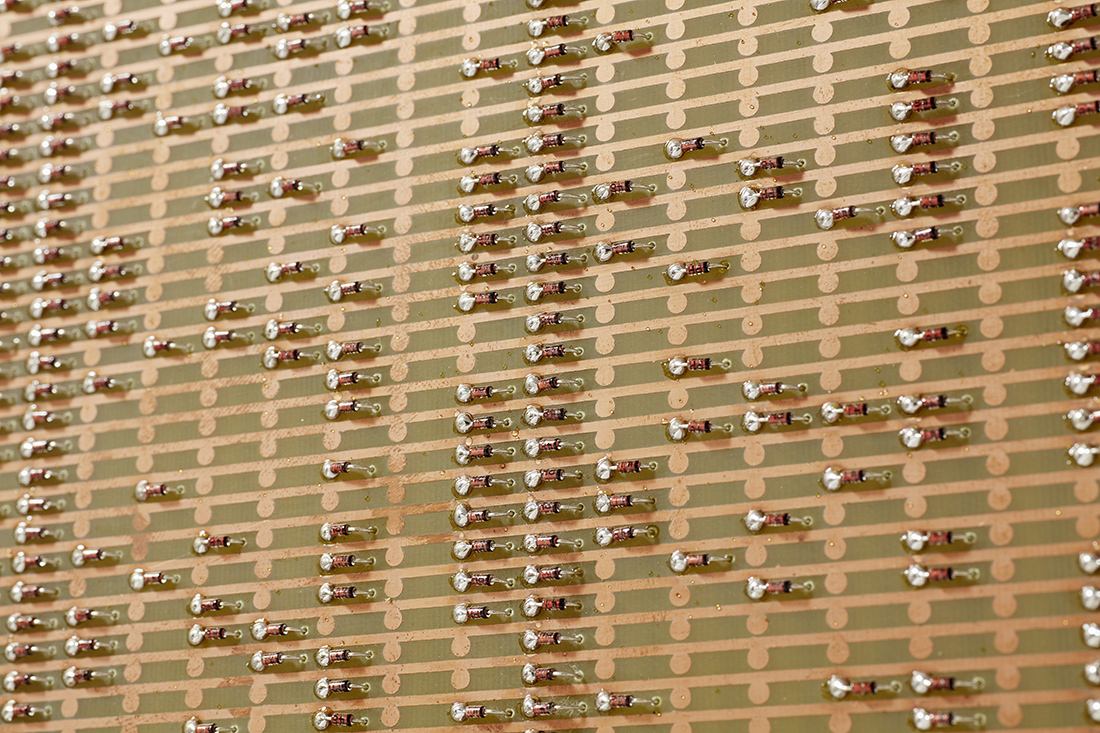 Goldbach: Read Only Memory, Details der Vorder- und Rückseite / details front and reverse side: A Philosophical Language (J. Wilkins), doppelseitig kupferkaschiertes Epoxidharz-Glashartgewebe, elektrische Bauteile, Lötblei / Double-sided, copper-coated, epoxy resin glass fabric laminate, electrical components, lead solder, 106,5 x 106,5 cm, 2016
Goldbach: Read Only Memory, Details der Vorder- und Rückseite / details front and reverse side: A Philosophical Language (J. Wilkins), doppelseitig kupferkaschiertes Epoxidharz-Glashartgewebe, elektrische Bauteile, Lötblei / Double-sided, copper-coated, epoxy resin glass fabric laminate, electrical components, lead solder, 106,5 x 106,5 cm, 2016
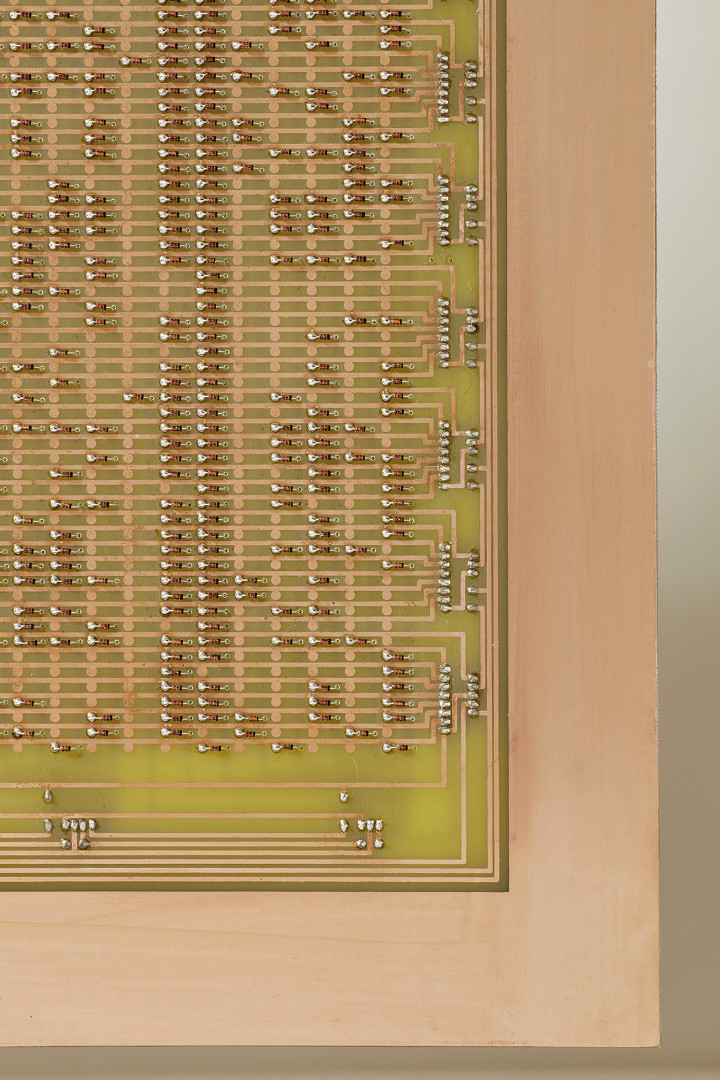
Goldbach: Read Only Memory, Details der Vorder- und Rückseite / details front and reverse side: A Philosophical Language (J. Wilkins), doppelseitig kupferkaschiertes Epoxidharz-Glashartgewebe, elektrische Bauteile, Lötblei / Double-sided, copper-coated, epoxy resin glass fabric laminate, electrical components, lead solder, 106,5 x 106,5 cm, 2016

Philipp Goldbach: Read Only Memory, Annely Juda Fine Art, London, 2016. Von links nach rechts / From left to right: A Philosophical Language (J. Wilkins) / The Advancement of Learning (F. Bacon) / De Umbris Idearum (G. Bruno) / Lettre à Marin Mersenne (R. Descartes) / Dissertatio de Arte combinatoria (G. W. Leibniz), Via Lucis (J. A. Comenius), doppelseitig kupferkaschiertes Epoxidharz-Glashartgewebe, elektrische Bauteile, Lötblei / Double-sided, copper-coated, epoxy resin glass fabric laminate, electrical components, lead solder, 106,5 x 106,5 cm, 2016

Philipp Goldbach: Sheet Films, M29 Köln / Cologne, 2015. Fujifilm NPS / Kodak E100G, Lack auf Plexiglas, je 192,5 x 152 cm, 2012-15
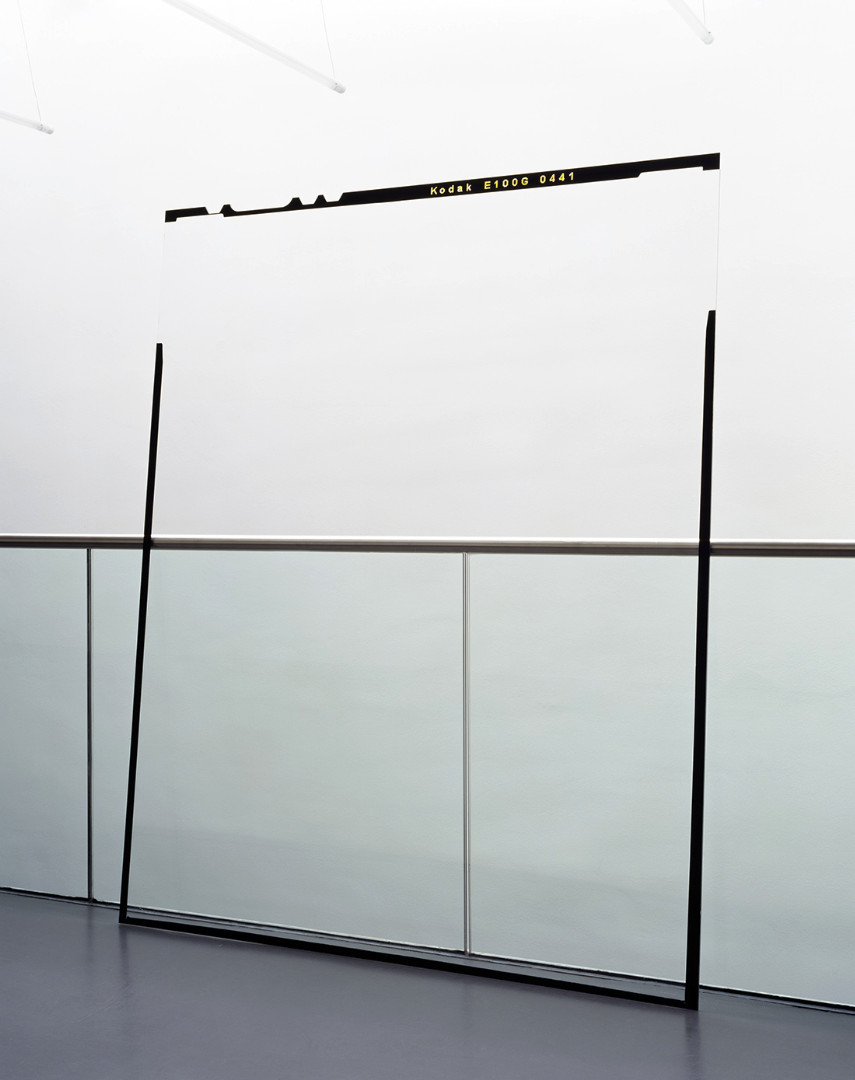
Philipp Goldbach: Kodak E100G (überbelichtet, entwickelt / over-exposend, developed), Lack auf Plexiglas / enamel on plexiglass, 192,5 x 152 cm, 2012
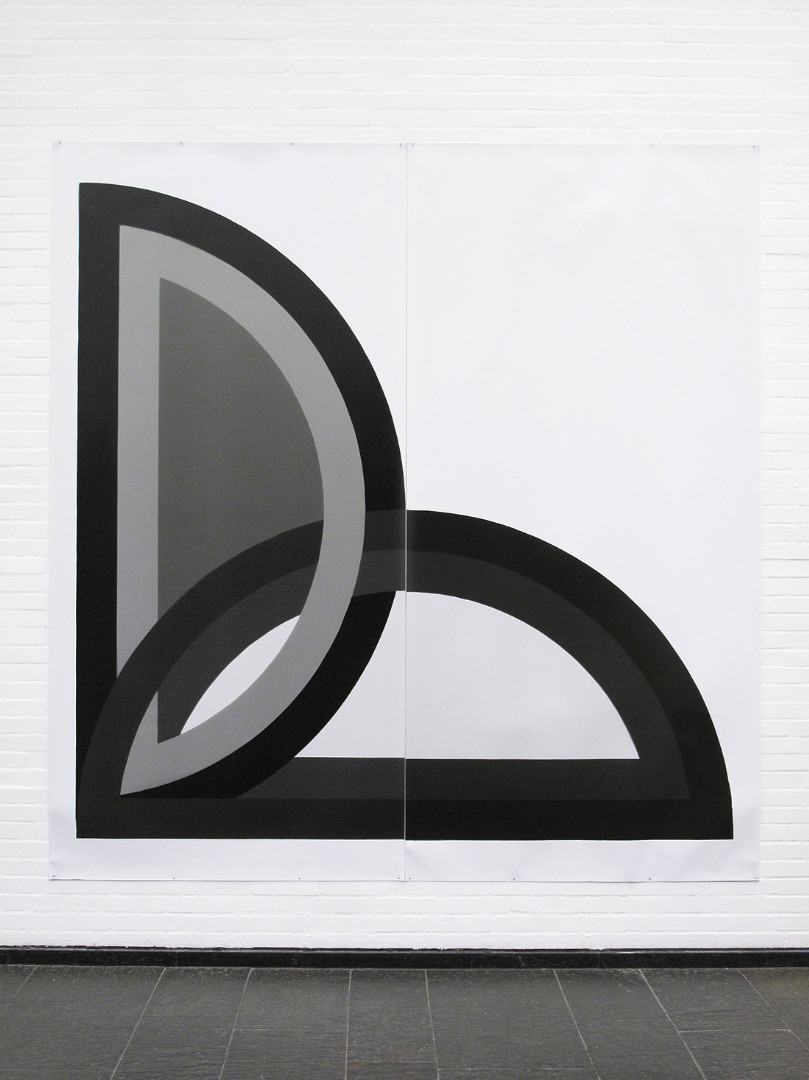
Philipp Goldbach: Sabra I (F. Stella), Fotogramm, zweiteiliger Silbergelatineabzug / photogram, silver gelatine print (in two parts), 254 x 254 cm, 2012
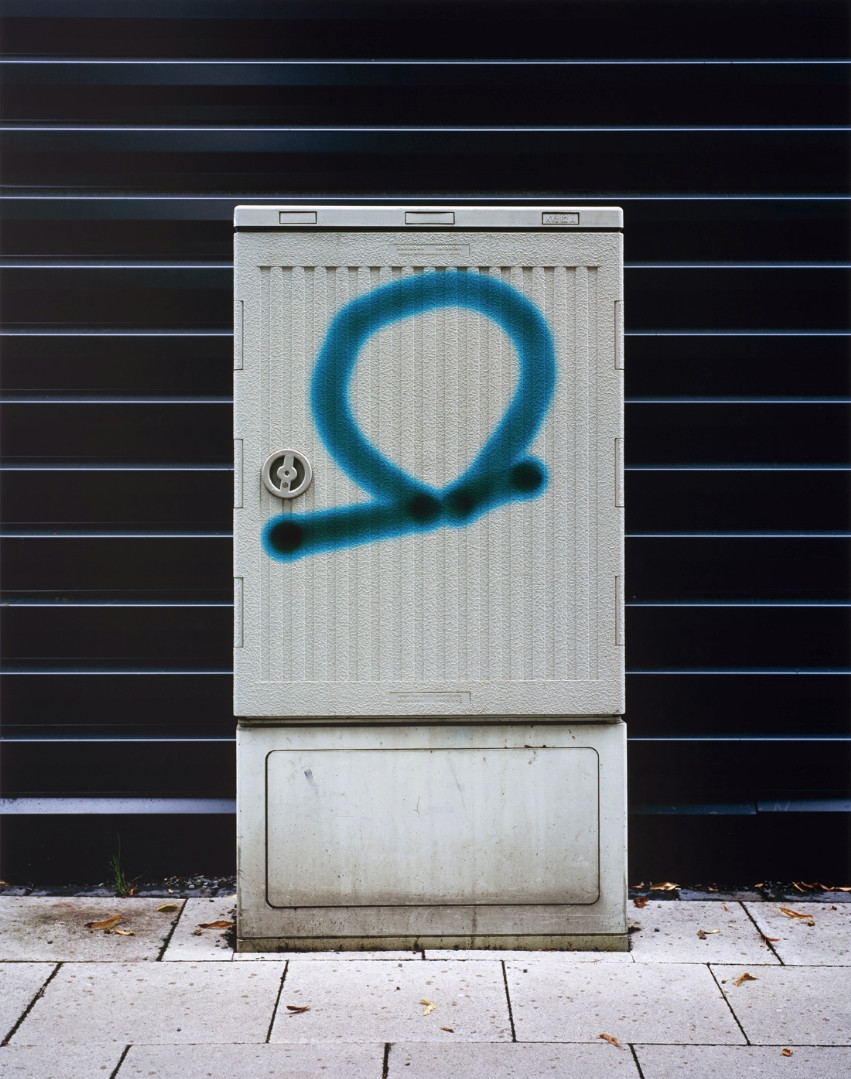
KVz 82 A (Cyan), Luminogramm auf chromogenem Farbabzug / colour luminogram on C-Print, 110,5 x 87 cm, 2016